MBL March Madness

It was a battle of the best this year, but there was one CLEAR winner. With a final vote of 4,770 to 1,846, it wasn't even close. This year's tiniest contender, measuring in at just 2 micrometers wide, swept away the competition. Congratulations to GREEN ALGAE (Micromonas) — your 2024 MBL March Madness Champion!
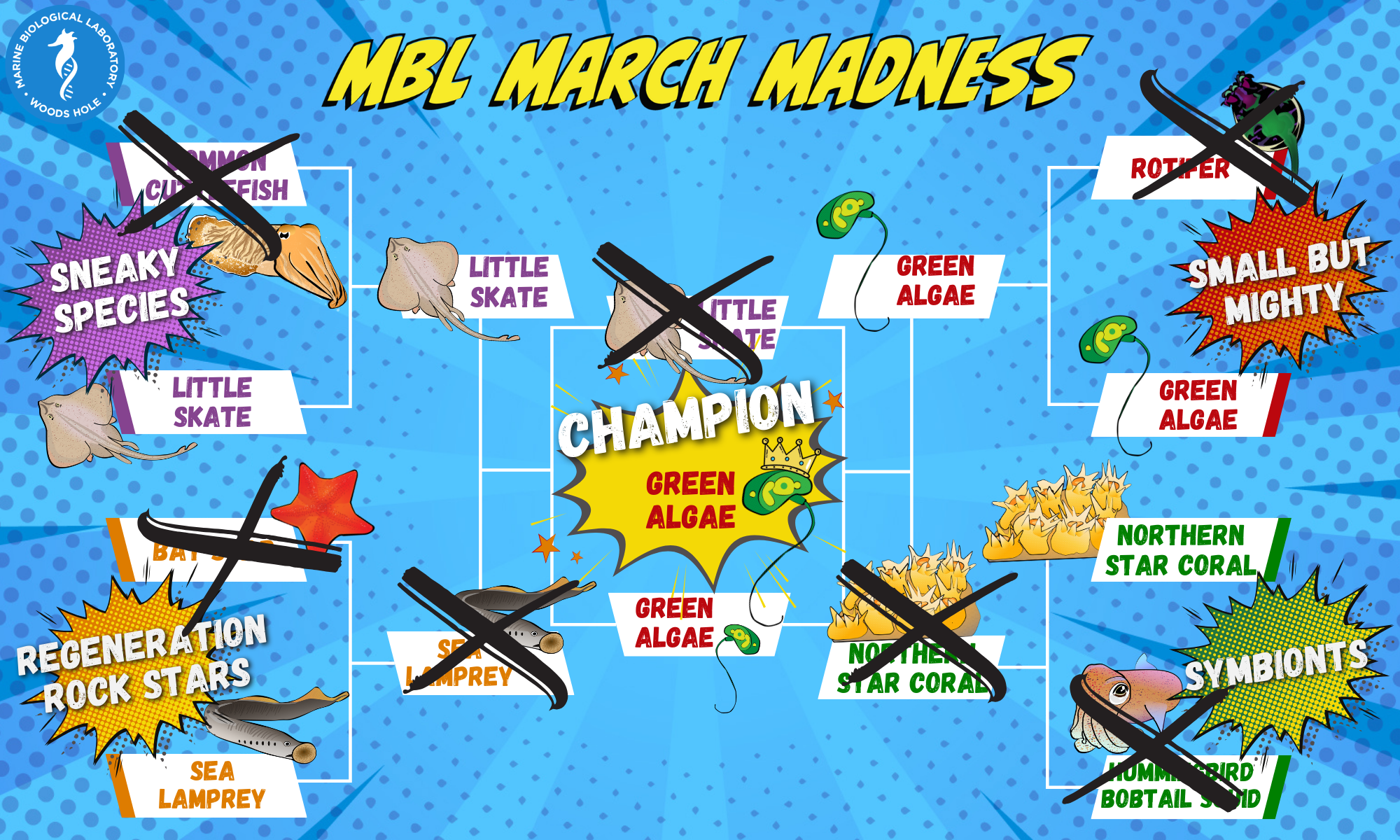
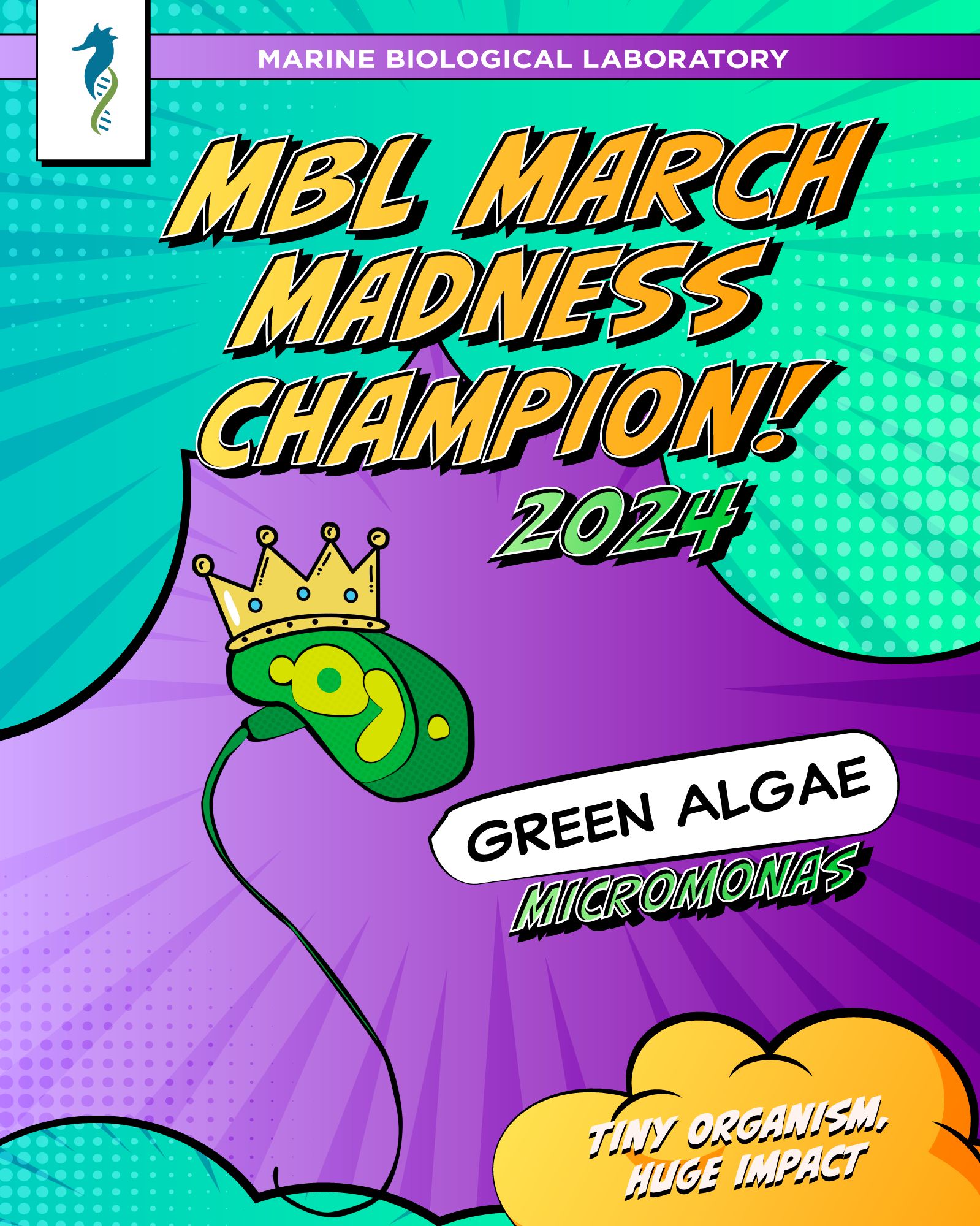
Meet Your Champion
The green algae (Micromonas) is a eukaryotic, photosynthetic microorganism widely distributed in marine ecosystems around the globe, even in arctic waters. At under 2 micrometers in diameter, it’s considered a picoeukaryote.
There are at least seven known species of Micromonas and likely more out there! Despite their small size, picophytoplankton like Micromonas dominate the open ocean and are important to primary production. Though the contribution of each different species of picophytoplankton are not as well known. Micromonas has been used as a model organism for exploring virus–host infection dynamics within marine chlorophytes.
Green Algae and the MBL
Scientists in the Worden Lab at the MBL, study the fate and transport of carbon in the oceans, with a current focus on marine photosynthetic microbes, like Micromonas.
Four Divisions Competed For Victory:
Green Algae (Micromonas) may have come out on top, but learn about some of the 2024 contenders.

If you lose your arm in an accident, you can't grow a new one—but the members of this division can! When a bat star (P. miniata) larva is cut in half, each half can regrow the missing parts of its body. Scientists at the MBL and around the world study bat stars to learn more about embryonic development, reproduction, and regeneration. The sea lamprey (P. marinus) can fully regenerate its spinal cord even after it’s been severed — within 3 months the lamprey is swimming, burrowing, and flipping around as if it were never injured.
Meet the masters of regeneration
Bat Sea Star (Patiria miniata)
Sea Lamprey (Petromyzon marinus)
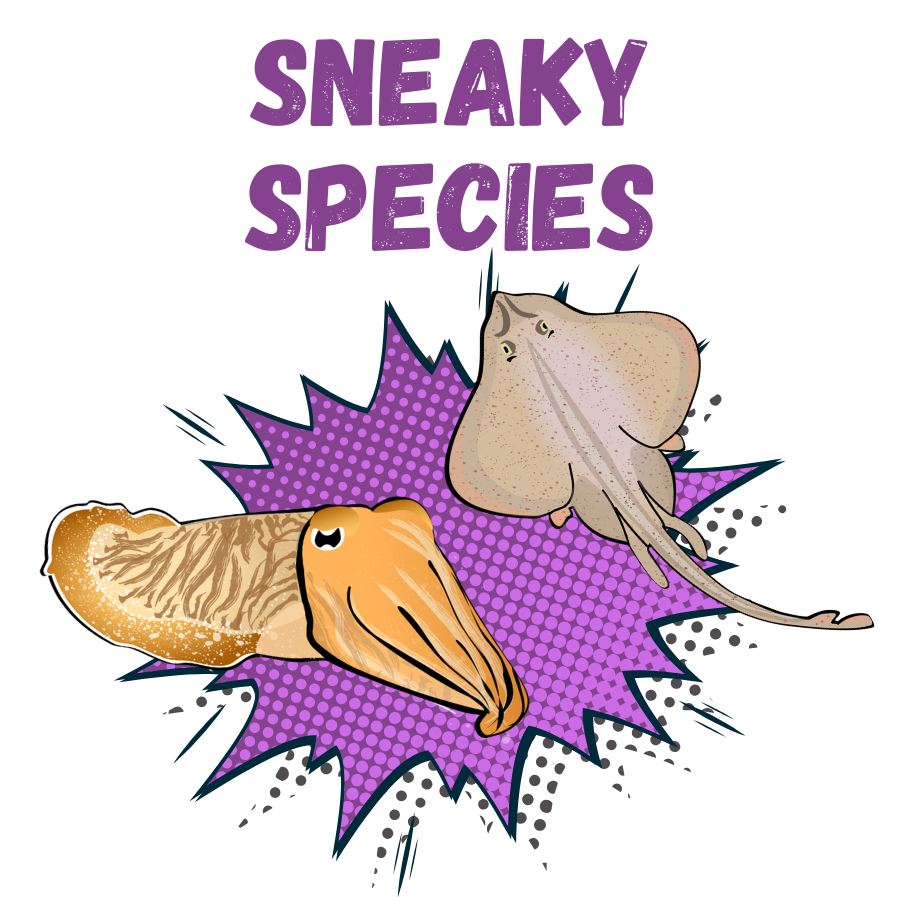
Blink and you'll miss the members of this division. The little skate (L. erinacea) buries itself under the sandy substrate with only its eyes protruding, relying on its mottled sand-colored camouflage to stay hidden. MBL scientists use skates and their embryos to study skeletal development. The common cuttlefish (S. officinalis) can produce many appearances thanks to special color-changing organs in their skin called chromatophores. Chromatophores act as pixels across the cuttlefish’s body, changing their size to alter the pattern and color on the animal’s skin.
Meet the camouflage crusaders!
Little Skate (Leucoraja erinacea)
Common Cuttlefish (Sepia officinalis)
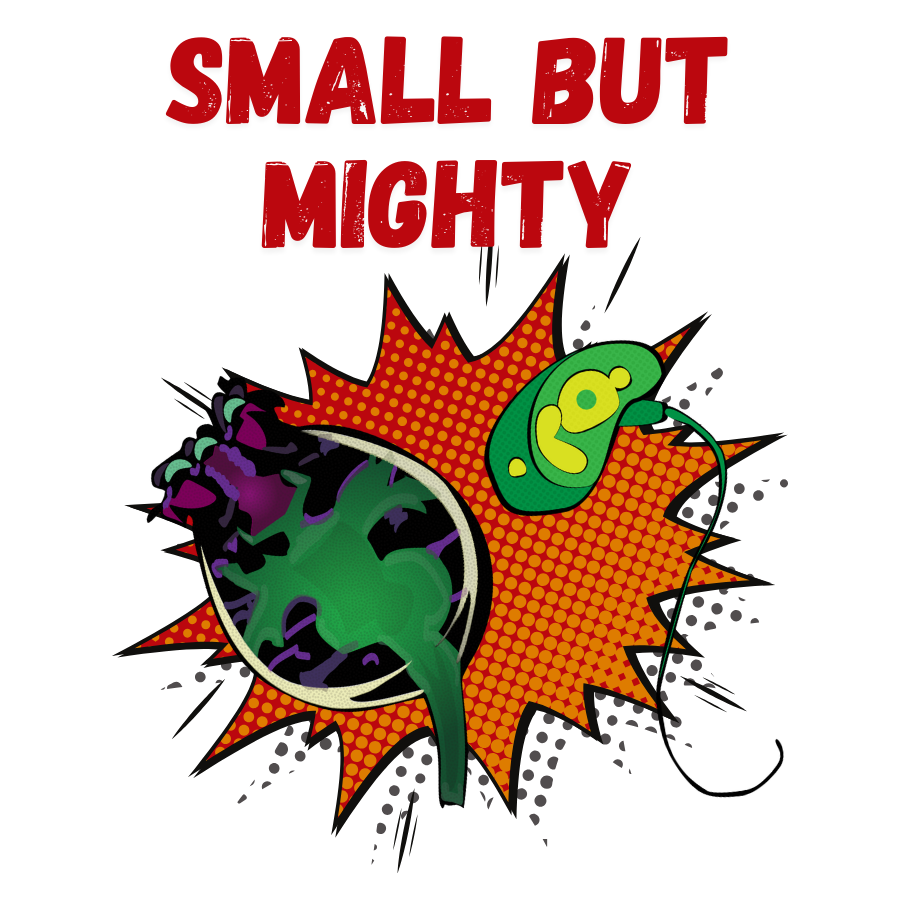
What does size matter anyway? Green algae (Micromonas) and rotifers (Brachionus manjavacas) may be small in stature (under 2 micrometers and between 200 to 500 micrometers, respectively), but that doesn't stop them from being incredibly important research organisms. Rotifers are no larger than a grain of sand yet they have complex bodies with a brain, muscles, and digestive, nervous, and reproductive systems. Despite their tiny size, Micromonas make up a significant amount of picoplanktonic biomass and productivity and are vital to helping us understand how climate change is impacting the oceans.
Meet the smallest March Madness contenders!
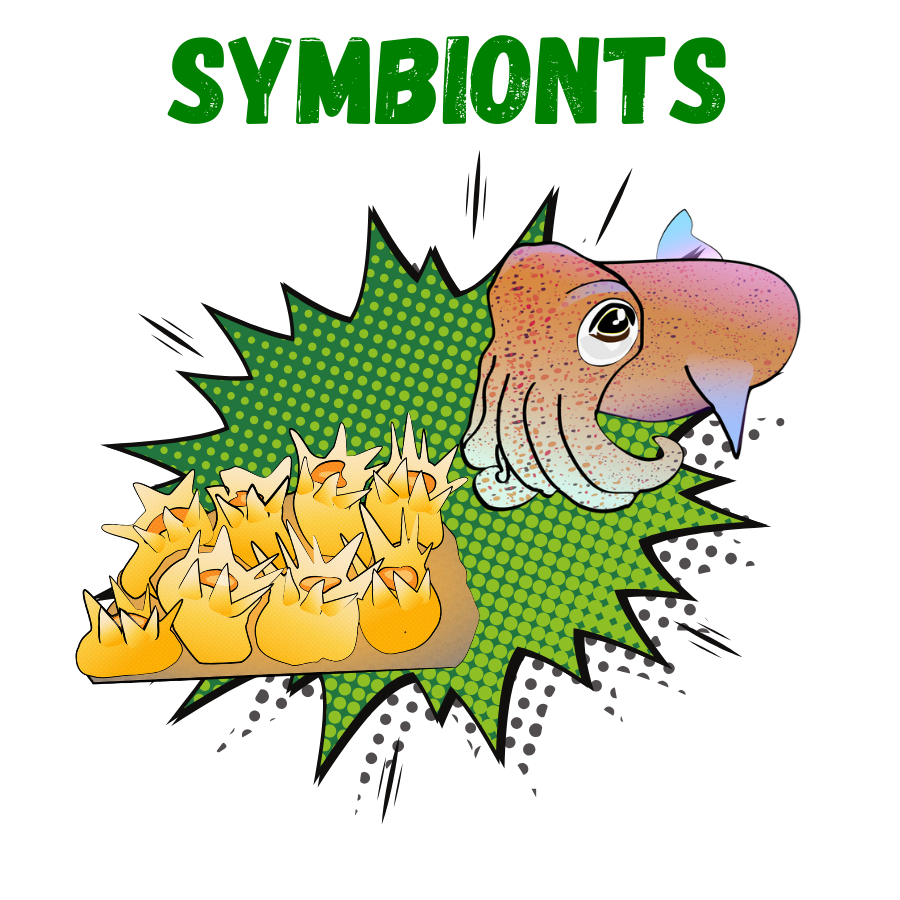
The two members of this division get by with a little help from their friends. Like almost all corals, northern star coral (A. poculata) houses symbiotic microorganisms called zooxanthellae inside its body. In return for this protection, these tiny creatures provide the coral with nutrients. To avoid being eaten, Hummingbird bobtail squid (E. berryi) have a symbiotic relationship with Vibrio fischeri, a species of bioluminescent bacteria, which provides camouflage so Euprymna are not silhouetted by the moon at night when the animals are most active.
Meet the super-powered symbionts!
Hummingbird Bobtail Squid (Euprymna berryi)
Northern Star Coral (Astrangia poculata)